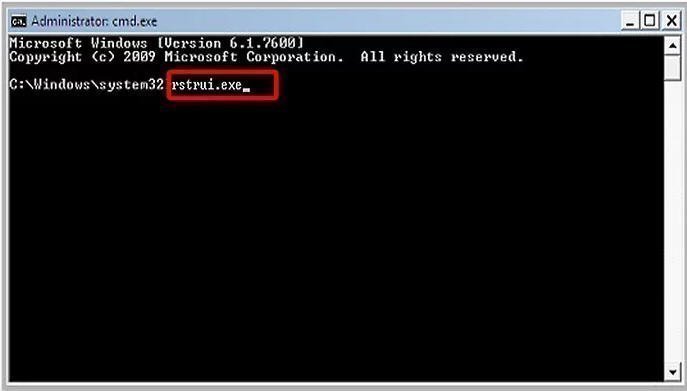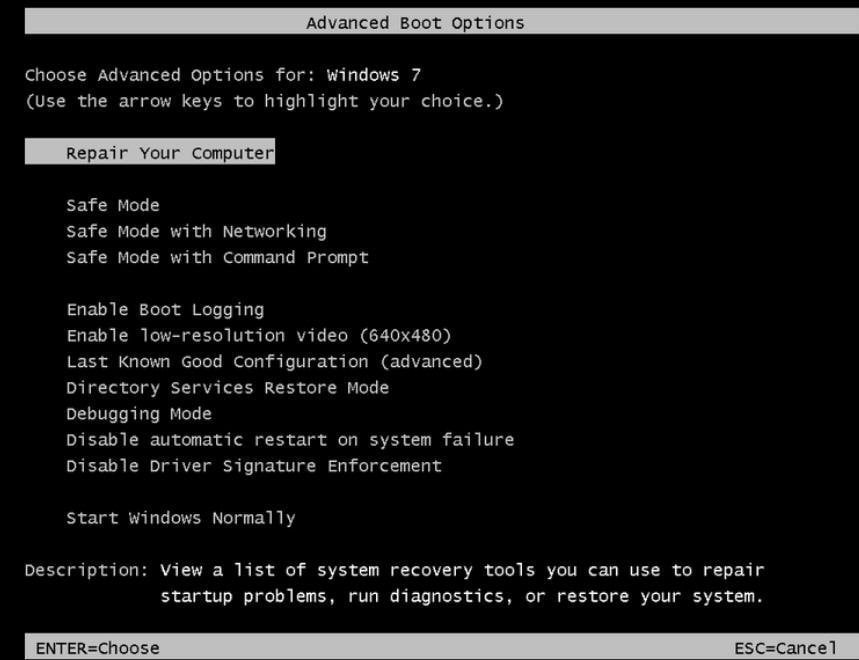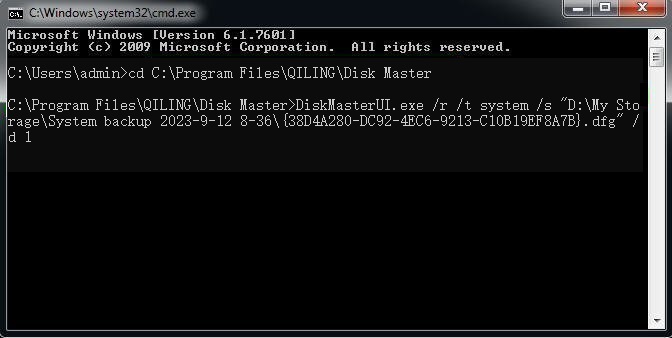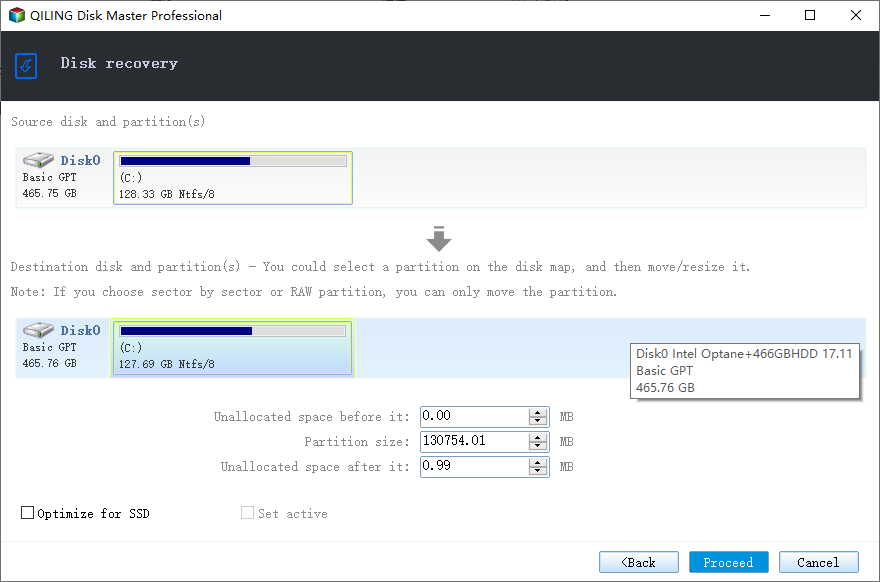How to Run System Restore from Command Prompt Windows 7
When do you need to restore Windows 7?
Are you experiencing issues with your Windows 7 system and want to restore it to a previous state? Running System Restore from Command Prompt can be a convenient and efficient way to do so. In this article, we will guide you through the process of running System Restore from Command Prompt in Windows 7.
When your Windows system is experiencing issues, you may be tempted to reinstall the operating system. However, this can be a time-consuming and labor-intensive process, especially if you have a lot of files and programs installed. In contrast, System Restore is a quick and efficient way to restore your system to a previous state, without the need to reinstall Windows.
When you get a new computer, you may want to keep your old system intact, without having to reinstall your frequently-used applications. Fortunately, there's a way to transfer your old system to the new computer, making the transition smooth and hassle-free.
If you're unable to access the System Restore utility from the Control Panel, you can still perform System Restore from the Command Prompt in Windows 7. Here are three methods to do so:
- Launch System Restore from Command Prompt in System Recovery Options
- Launch System Restore via Safe Mode with Command Prompt
- Restore Windows 7 with Qiling Disk Master.exe
Launch System Restore from Command Prompt in System Recovery Options
When Windows is unable to boot, one of the first things that comes to mind is the System Recovery Options Command Prompt in Windows 7. However, if you try to use the "wbadmin start recovery" command, you will get the following error:
When Windows is unable to boot, one of the first things that comes to mind is the System Recovery Options Command Prompt in Windows 7. However, if you try to use the "wbadmin start recovery" command, you will get the following error:
The "wbadmin start recovery" command is a sub-command of Wbadmin that is specifically designed for use in Windows Server environments. This command allows you to restore files, volumes, or applications that were previously backed up using Windows Server Backup.
Luckily, you can open System Restore by another command:
1. If you're trying to access System Restore from the Command Prompt in System Recovery Options, you can use the `rstrui.exe` command to open the System Restore wizard directly.
2. Choose a restore point and click Next. Follow the instruction to complete system restore.
Launch System Restore via Safe Mode with Command Prompt
If you're unable to access System Restore through the normal method, you can try launching it in Safe Mode with Command Prompt. Here's how:
1. Restart your computer. During the start process, repeatedly press F8 until Windows Advanced Boot Options appears. Select Safe Mode with Command Prompt and press Enter.
2. When you get into the Command Prompt window, type cd restore and press Enter. Then type rstrui.exe and press Enter. Then you will launch the System Restore wizard and you can follow the wizard to complete restore process.
Restore Windows 7 with Qiling Disk Master.exe
Qiling Disk Master Professional is trustable backup and restore software. It enables you to backup and restore the system either from graphic user interface or command line. The best part is you can use the Universal Restore feature to �estore system to dissimilar hardware. Besides, it supports both 32 bit and 64 bit of Windows 11/10/8.1/8/7/Vista/XP.restore system to dissimilar hardware. Besides, it supports both 32 bit and 64 bit of Windows 11/10/8.1/8/7/Vista/XP.
Some required parameters:
● {/r}: restore the backup of system, disk, partition or dynamic volume.
● {/t} {system | disk | part}: specify restore type.
● {/s}{D:\my backup\my backup.fvd | \\192.168.1.1.\my backup\my backup.fvd}: specify the path of the image file.
● {/x}: specify universal restore to restore system to dissimilar hardware. It has to be used with "/t system" and "/t disk".
Qiling Disk Master restore is based on Qiling Disk Master backup. That is to say, if you want to perform system restore with Qiling Disk Master, you must create a system image backup by Qiling Disk Master in advance. To make the restore process smooth, you can check if system image backup is intact and without error by using the Check Image feature.
Steps to run system restore from Command Prompt in Windows 7
Step 1. Click "Start" and type CMD to open the Command Prompt. Right click "cmd" and select "Run as administrator".
Step 2. Navigate to Qiling Disk Master installation directory by typing the following command and press Enter:
cd [installation path of Qiling Disk Master] (e.g., cd C:\Program Files (x86)\Qiling Disk Master)
Step 3. Type the following command and press Enter to Proceed:
DiskMasterUI /r /t [backup type] /s "[backup location path]" /d [destination location]
For example:
① To restore the system image "systembackup1.fvd" saved in J:\systembackup to disk 1. The command should be: DiskMasterUI /r /t system /s "J:\system backup\systembackup1.fvd" /d 1.
② To restore the system image "systembackup1.fvd" saved in D:\system backup to partition 0 on disk 0 and perform universal restore. The command should be: DiskMasterUI /r /t system /s "D:\system backup\systembackup1.fvd" /d 0:0 /x.
Notes:
● To run system restore when Windows fails to boot, you should create bootable media with Qiling Disk Master to boot your machine. It will bring you to the main interface of Qiling Disk Master. You can open Command Prompt from Tools > Windows shell command and then type the commands mentioned above to perform system restore.
● When running system restore commands in Windows PE, you might encounter an issue where the drive letters change. This can be due to the way Windows PE handles drive letters.
Restore with Qiling Disk Master GUI
If you're looking to restore your Windows 7 system to a specific point in time, you can do so using the System Restore feature. This process allows you to revert your system to a previous state, effectively "rolling back" any changes made since then.
Restoring Windows 7 with a system image backup is a straightforward process that can be completed in a few steps. This method allows you to restore your entire system to a previous state, including all files, settings, and applications.
Conclusion
Running system restore from the Command Prompt in Windows 7 is a straightforward process that can be completed in a few steps. This method allows you to restore your system to a previous state, including all files, settings, and applications.
Qiling Disk Master Technician is a powerful tool designed to protect unlimited computers within a company. This software offers a range of features that make it an ideal choice for businesses looking to safeguard their computer systems.
Related Articles
- Factory Reset using System Recovery Options Command Prompt
- How to Run System Restore via Command Prompt in Windows 10?
- Best Way to Backup Data to Synology NAS (2024 Choice)
Are you looking for the best way to back up data to Synology NAS? Well, you are in the right place. This tutorial will walk through the best backup software Qiling Disk Master, as well as the steps to use it to back up Windows data to Synology NAS. - Best Free Cloud Backup for PC (Top 2 Ways Included)
This article will introduce you the best free cloud backup for PC. Whether you want to backup files or even the Windows system, you can finish this task simply and for free.




